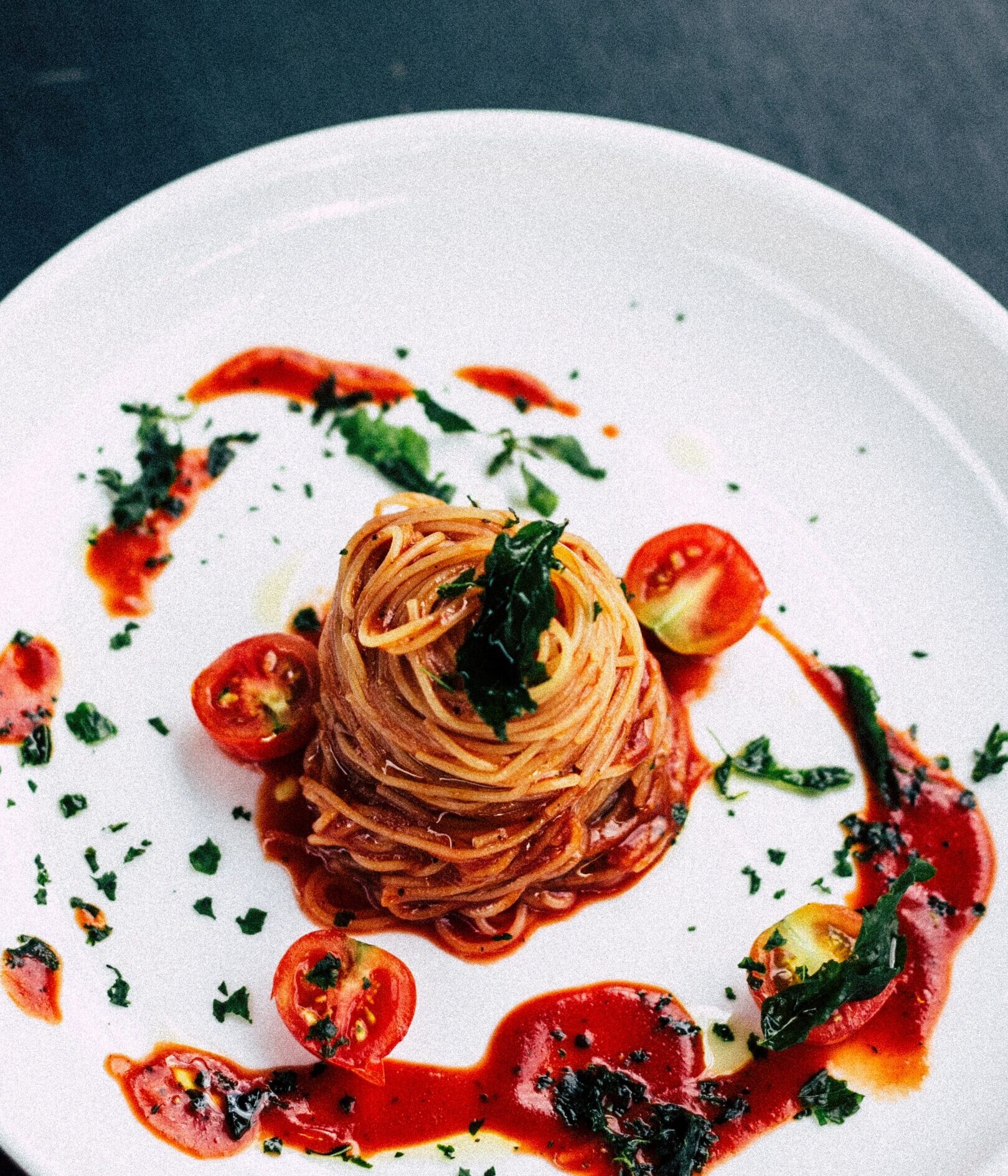Are you tired of store-bought pasta sauces that just don’t have that authentic Italian flavor? Well, look no further! In this step-by-step guide, we will show you how to make a mouthwatering and truly authentic Italian pasta sauce right in your own kitchen. Get ready to impress your family and friends with the rich aromas and delicious flavors of homemade sauce. Let’s dive in and discover the secrets behind creating the perfect Italian masterpiece!
What You’ll Need

To create an authentic Italian pasta sauce, you don’t need a pantry full of fancy ingredients. In fact, simplicity is key when it comes to capturing the true essence of Italian cuisine. Here’s what you’ll need for this recipe:
1. Olive oil: Start with a good quality olive oil as the base for your sauce. It adds richness and depth of flavor.
2. Aromatics: Chop up some garlic cloves and onions to sauté in the olive oil. This will provide a fragrant foundation for your sauce.
3. Canned tomatoes: Opt for whole peeled San Marzano tomatoes or crushed tomatoes packed in puree for the best results.
4. Herbs and spices: Gather dried basil, oregano, thyme, and a pinch of red pepper flakes to season your sauce.
5. Salt and black pepper: Enhance the flavors by adding just the right amount of salt and freshly ground black pepper.
6. Fresh herbs (optional): If available, add some fresh basil or parsley at the end to brighten up the flavors.
Now that you have all your ingredients ready, let’s move on to creating a truly delectable pasta sauce that will transport you straight to Italy!
Step One: Sauté the Aromatics
The first step in making an authentic Italian pasta sauce is to sauté the aromatics. This crucial step sets the foundation for a flavorful and aromatic sauce that will have your taste buds dancing with delight.
To begin, gather your ingredients – onions, garlic, and fresh herbs like basil or oregano. Chop the onions finely and mince the garlic cloves. Heat some olive oil in a large skillet over medium heat.
Once the oil is hot, add the chopped onions and minced garlic to the skillet. Sprinkle some salt and pepper to enhance the flavors. Stir them gently until they become soft and translucent, releasing their wonderful aroma into your kitchen.
Now it’s time to bring out those fresh herbs! Add a handful of torn basil leaves or a teaspoon of dried oregano to elevate the fragrance of your sauce even further. Let them mingle with onions and garlic as they continue to cook down.
Sautéing these aromatics creates a beautiful base for your pasta sauce, infusing it with layers of flavor right from its inception. The combination of onion sweetness, rich garlic undertones, and herbaceous notes will make this sauce truly irresistible.
Remember not to rush this step; take your time allowing all these ingredients come together harmoniously before moving on to adding tomatoes in Step Two!
Stay tuned for our next blog section where we delve into Step Two: Adding Tomatoes!
Step Two: Add the Tomatoes
Now that your aromatics are sautéed to perfection, it’s time to add in the star of the show – tomatoes! Authentic Italian pasta sauce is all about using fresh and high-quality ingredients, so opt for ripe and juicy tomatoes. You can choose between whole peeled tomatoes or crushed tomatoes, depending on your preference.
Gently pour in the tomatoes into the pot with your sautéed aromatics. Feel free to use a wooden spoon to break up any large tomato chunks if you prefer a smoother consistency. As you stir everything together, take a moment to inhale that heavenly aroma filling your kitchen.
To enhance the flavor of your sauce even further, consider adding some tomato paste. This concentrated ingredient adds depth and richness to the overall taste profile. Simply scoop out a tablespoon or two of tomato paste and mix it thoroughly with the rest of your ingredients.
Once everything is well combined, let it simmer on low heat for at least an hour. This slow cooking method allows all those flavors to meld together beautifully. The longer you let it simmer, the better – just be sure to keep an eye on it and stir occasionally so nothing sticks!
Remember, making authentic Italian pasta sauce isn’t about rushing through each step; rather, it’s about savoring every moment and allowing each ingredient to shine. So go ahead and revel in this glorious stage as your homemade sauce takes shape before your eyes!
Step Three: Simmer the Sauce
Now that you’ve added the tomatoes to your sautéed aromatics, it’s time to let everything simmer together and work its magic. This step is crucial for developing those deep, rich flavors that make Italian pasta sauce so irresistible.
Once you’ve brought the sauce to a gentle boil, reduce the heat to low and let it simmer uncovered. This allows some of the excess liquid to evaporate, resulting in a thicker and more concentrated sauce. As it simmers, be sure to stir occasionally to prevent sticking or burning.
The length of time you’ll need to simmer your sauce will depend on personal preference and how thick you want it to be. Some recipes call for just 20 minutes of simmering, while others recommend an hour or longer for maximum flavor development.
During this stage, feel free to taste your sauce periodically and adjust seasonings as needed. Adding a pinch more salt or a sprinkle of dried herbs can take your sauce from good to fantastic.
Remember that patience is key here; don’t rush through this step! The longer you allow your sauce to simmer gently over low heat, the more complex and luxurious its flavors will become.
So grab yourself a wooden spoon, put on some relaxing music (Italian opera optional), and enjoy this meditative process as your pasta sauce transforms into something truly special.
Optional Steps
Once you’ve mastered the basic steps of making authentic Italian pasta sauce, it’s time to take things up a notch by adding optional ingredients to enhance the flavor. These additions can elevate your sauce from delicious to extraordinary.
One option is to add a splash of red wine during the simmering process. This not only adds depth and complexity to the sauce but also helps mellow out any acidity in the tomatoes. Just be sure to use a dry red wine that you enjoy drinking!
Another way to boost flavor is by incorporating fresh herbs like basil, oregano, or parsley. Simply chop them finely and add them towards the end of cooking for maximum freshness and aroma.
If you prefer a creamier texture, consider stirring in some heavy cream or grated Parmesan cheese at the end. This will give your sauce a rich and velvety consistency that pairs perfectly with pasta.
For those who like their pasta on the spicy side, adding crushed red pepper flakes or sliced jalapenos can bring some heat and kick up the flavor profile.
Remember, these additional steps are entirely optional – feel free to experiment with different combinations until you find your perfect blend of flavors!
So go ahead and get creative! The beauty of making your own pasta sauce lies in its versatility. Whether you choose one or all of these optional steps, each addition will contribute something unique and memorable to your homemade masterpiece!
Storing and Freezing Your Sauce
Now that you’ve made a delicious batch of authentic Italian pasta sauce, you may be wondering how to store it for later use. Well, good news! There are a few options available to ensure your sauce stays fresh and flavorful.
One popular method is to simply refrigerate the sauce in an airtight container. This will keep it fresh for up to 4-5 days. If you plan on using the sauce within this time frame, refrigeration is a convenient option.
If you want your sauce to last even longer, freezing is the way to go. Before freezing, allow your sauce to cool completely. Then transfer it into freezer-safe containers or zip-top bags. Be sure to leave some extra space at the top as liquids expand when frozen.
Label each container with the date and contents so you can easily identify them later on. Frozen pasta sauce can typically be stored for up to 3 months without sacrificing flavor or quality.
When you’re ready to use your frozen sauce, simply thaw it overnight in the refrigerator or defrost it in a microwave if you’re short on time.
By taking these steps, you’ll always have homemade pasta sauce ready whenever those cravings hit! So go ahead and make a big batch because now storing and freezing your Italian pasta sauce has never been easier!
Tips and Tricks
Now that you know the step-by-step process of making authentic Italian pasta sauce, here are some additional tips and tricks to help you take your sauce to the next level:
1. Use San Marzano tomatoes: These plum tomatoes from Italy are known for their rich flavor and low acidity, making them ideal for pasta sauces.
2. Experiment with herbs: While basil is a classic choice for Italian pasta sauce, don’t be afraid to try other herbs like oregano or thyme to add depth and complexity to your sauce.
3. Don’t forget the sugar: Adding a pinch of sugar can help balance out the acidity of the tomatoes and enhance their natural sweetness.
4. Let it rest: After simmering your sauce, allow it to cool slightly before serving. This will give the flavors time to meld together and result in a more flavorful dish.
5. Use quality ingredients: The key to a delicious pasta sauce lies in using high-quality ingredients such as fresh garlic, extra virgin olive oil, and freshly grated Parmesan cheese.
6. Add some red wine: For an extra layer of flavor, consider adding a splash of red wine while sautéing the aromatics. Just remember not to use cooking wine – opt for something you would enjoy drinking instead!
7. Taste as you go: Throughout the cooking process, make sure to taste your sauce regularly and adjust seasonings accordingly. Everyone’s palate is different, so feel free to customize it according to your own taste preferences.
8. Serve with love: Remember that food tastes best when prepared with love! So invite friends or family over, set up a cozy table setting, light some candles – create an inviting atmosphere where your homemade Italian pasta sauce can shine!
By following these tips and tricks along with our step-by-step guide above,you’ll be well on your way towards creating an authentic Italian pasta sauce that will impress even nonna herself! So roll up your sleeves, grab a wooden spoon, and get cooking. Bu
